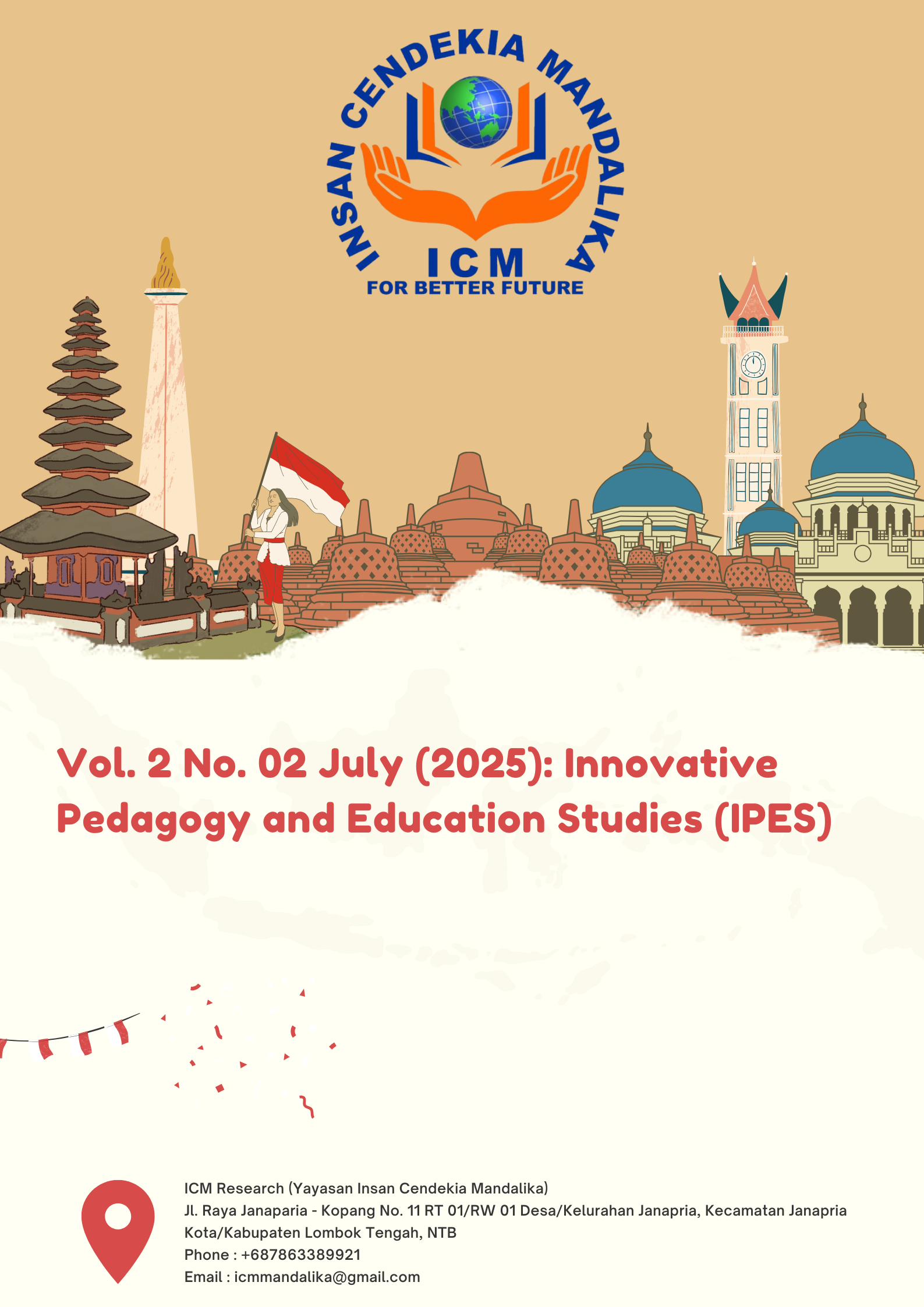Human-Centered Approach in Digital Education Planning: Building Empathy Amid Technology
Keywords:
Digital education,, Human-centered design, Empathy, Educational planning, Educational technologyAbstract
The digital era has fundamentally transformed the face of education, from learning methods to interactions between teachers and students. However, the massive development of technology often overlooks human dimensions such as empathy, values, and interpersonal relationships. This article aims to examine a human-centered approach in digital education planning that prioritizes human needs, experiences, and values as the central point. Using a qualitative-conceptual approach, this article concludes that integrating empathy into digital education design not only enhances learning effectiveness but also fosters an inclusive, meaningful, and ethical learning environment
References
Anderson, T., & Dron, J. (2011). Three generations of distance education pedagogy. The International Review of Research in Open and Distributed Learning, 12(3), 80–97.
Alfitri, B. (2024). The Impact of Short-Form Content Tiktok on English Language Learning Development Among Generation Z: A Case Study of Students at Institut Elkatarie. Majapahit Journal of English Studies, 1(2), 174-191.
Brown, T. (2009). Change by Design: How Design Thinking Creates New Alternatives for Business and Society. Boston: Harvard Business Press.
Cook, S. D. N., & Brown, J. S. (1999). Bridging epistemologies: The generative dance between organizational knowledge and organizational knowing. Organization Science, 10(4), 381–400.
De la Croix, A., & Skelton, J. (2013). The reflective human-centred designer: Empathy and inclusion in health education. Medical Education, 47(11), 1023–1030.
Dewey, J. (1938). Experience and Education. New York: Collier Books.
Friesen, N. (2011). The Place of the Classroom and the Space of the Screen: Relational Pedagogy and Internet Technology. Educational Philosophy and Theory, 43(4), 422–432.
Fullan, M. (2013). The New Meaning of Educational Change (4th ed.). New York: Teachers College Press.
Holmes, W., Bialik, M., & Fadel, C. (2019). Artificial Intelligence in Education: Promises and Implications for Teaching and Learning. Boston: Center for Curriculum Redesign.
Lu, M. (2020). Human-centered learning in AI-powered education. AI & Society, 35(3), 555–568.
McLuhan, M. (1964). Understanding Media: The Extensions of Man. New York: McGraw-Hill.
Muslim, A. (2022). Pendidikan Spiritualitas Keagamaan Generasi Alfa pada Sekolah Dasar. MODELING: Jurnal Program Studi PGMI, 9(3), 519-535.
Norman, D. A. (2013). The Design of Everyday Things (Revised ed.). New York: Basic Books.
Norman, D., & Verganti, R. (2014). Incremental and radical innovation: Design research vs. technology and meaning change. Design Issues, 30(1), 78–96.
Rose, D. H., & Dalton, B. (2009). Learning to read in the digital age. Mind, Brain, and Education, 3(2), 74–83.
Rose, D. H., & Meyer, A. (2002). Teaching Every Student in the Digital Age: Universal Design for Learning. Alexandria, VA: ASCD.
Selwyn, N. (2016). Education and Technology: Key Issues and Debates. London: Bloomsbury Academic.
UNESCO. (2021). Reimagining our futures together: A new social contract for education. Paris: UNESCO Publishing.









